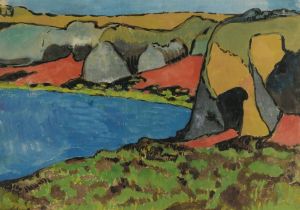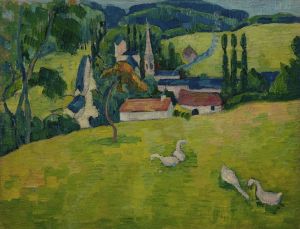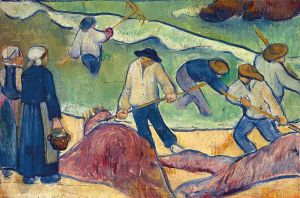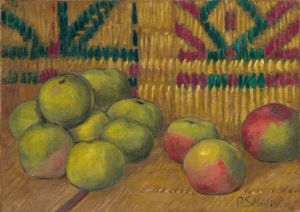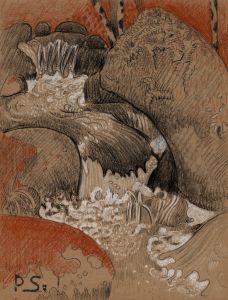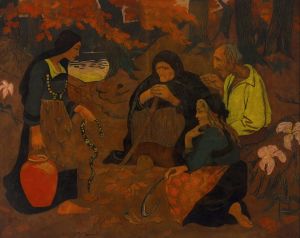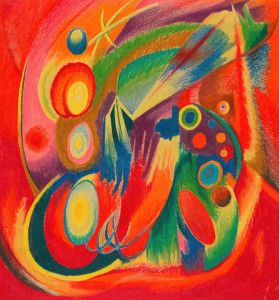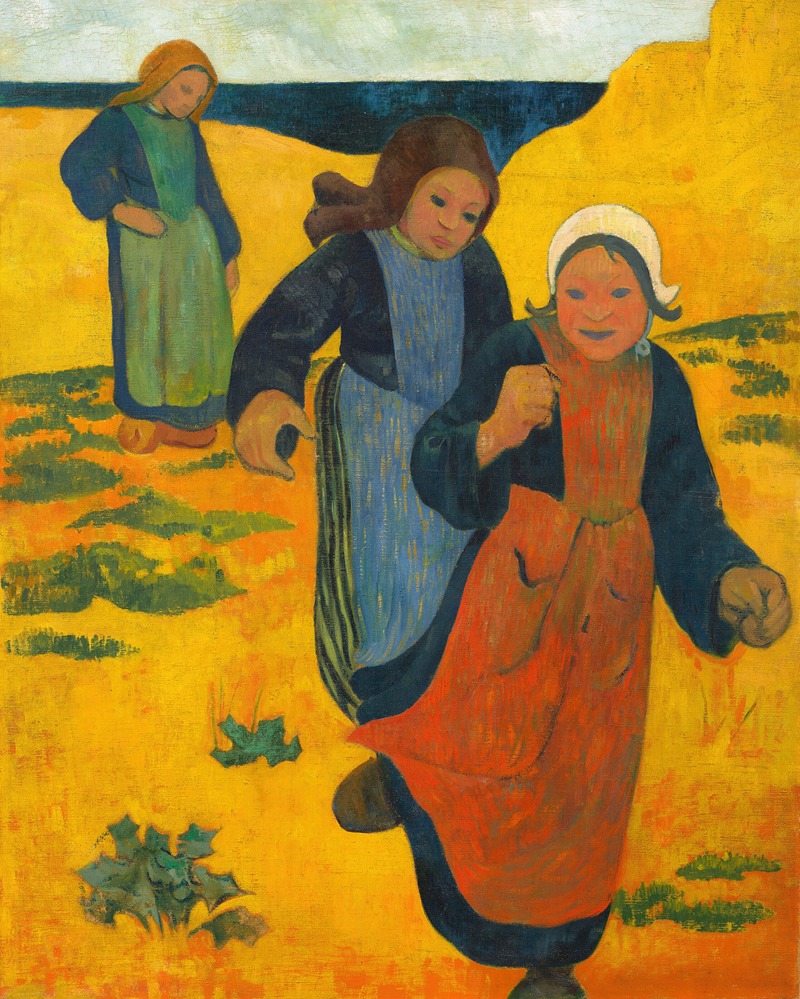
Filles aux grands sables
A hand-painted replica of Paul Sérusier’s masterpiece Filles aux grands sables, meticulously crafted by professional artists to capture the true essence of the original. Each piece is created with museum-quality canvas and rare mineral pigments, carefully painted by experienced artists with delicate brushstrokes and rich, layered colors to perfectly recreate the texture of the original artwork. Unlike machine-printed reproductions, this hand-painted version brings the painting to life, infused with the artist’s emotions and skill in every stroke. Whether for personal collection or home decoration, it instantly elevates the artistic atmosphere of any space.
Paul Sérusier's painting Filles aux grands sables (translated as Girls on the Large Sands) is a work by the French Post-Impressionist artist, created during the late 19th or early 20th century. Sérusier was a key figure in the Symbolist movement and a founding member of the Nabis, a group of avant-garde artists who sought to explore the spiritual and symbolic dimensions of art beyond naturalistic representation.
The painting depicts a group of women, often interpreted as Breton peasants, set against a backdrop of expansive sandy terrain. Sérusier's use of bold, flat areas of color and simplified forms reflects the influence of Paul Gauguin, whom Sérusier had met in Pont-Aven in 1888. Gauguin's emphasis on synthesizing nature into decorative, symbolic compositions deeply impacted Sérusier's artistic approach, as seen in Filles aux grands sables. The painting exemplifies the Nabis' focus on subjective interpretation and the emotional resonance of color and form.
The setting of the painting is likely inspired by the Brittany region of France, where Sérusier and other artists of the Pont-Aven School frequently worked. Brittany's rural landscapes and traditional culture provided a rich source of inspiration for Sérusier and his contemporaries. The women in the painting are dressed in traditional Breton attire, emphasizing the connection to the region's cultural identity.
Sérusier's technique in this work demonstrates his departure from strict naturalism, favoring instead a more abstract and decorative style. The composition is carefully balanced, with the figures harmoniously integrated into the landscape. The muted yet vibrant color palette contributes to the painting's meditative and timeless quality.
While Filles aux grands sables is not as widely known as some of Sérusier's other works, such as The Talisman (1888), it remains an important example of his contribution to the development of modern art. Sérusier's exploration of color, form, and symbolism influenced subsequent generations of artists and helped pave the way for movements such as Fauvism and abstraction.
The exact date of creation for Filles aux grands sables is not definitively documented, and specific details about its provenance or current location are not widely available. However, the painting is recognized as part of Sérusier's broader body of work that reflects his commitment to the ideals of the Nabis and his innovative approach to art.






